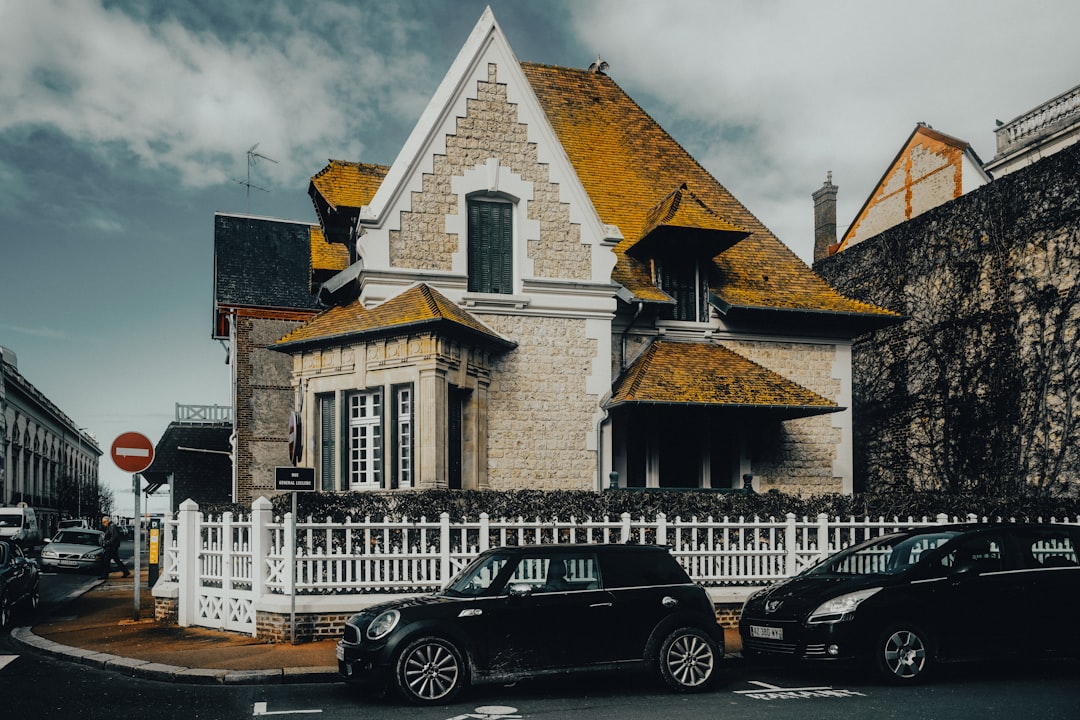

Engage prospects with a scan and streamline customer engagement with FREE QR code marketing tools by Sona – no strings attached!
Create a Free QR CodeFree consultation

No commitment

Engage prospects with a scan and streamline customer engagement with FREE QR code marketing tools by Sona – no strings attached!
Create a Free QR CodeFree consultation

No commitment
Property insurance providers today are under mounting pressure to evolve their customer engagement strategies amid rising policyholder expectations and a quickly changing regulatory environment. Acquisition costs are at an all-time high, while digital-first preferences are now the norm. Traditional marketing approaches struggle to deliver fast, relevant, and seamless lead journeys. A persistent challenge is that many high-value prospects remain invisible, never completing forms or engaging with the usual channels, which makes it harder to capture, segment, and act on true Sona intent data.
The emergence of QR codes as a strategic connector between physical marketing assets and digital workflows offers a way forward. With QR-powered experiences, insurers can transform static brochures, direct mail, renewal letters, or event signage into immediate gateways for policy inquiries, quote submissions, rapid claims initiation, or personalized renewals. This technology shortens the path from interest to action and ensures that engagement signals from previously anonymous traffic become accessible and trackable.
This guide explains how property insurance providers use QR codes to solve recurring pain points such as wasted spend targeted at unqualified leads, lack of visibility into prospect engagement, slow response to buyer interest, and difficulty attributing campaigns to concrete revenue. Through practical strategies, real-world examples, and actionable insights, you will learn how to create high-quality lead funnels, improve campaign agility, and build transparent marketing performance metrics. Platforms like Sona QR make this shift manageable by centralizing code creation, analytics, integrations, and identity resolution, so teams can capture demand at the source and convert it into measurable results with confidence.

Many insurance marketers report frustration with missed opportunities. Prospects browse print materials, walk past storefront signage, or attend community events, yet never make themselves known. The result is a CRM full of gaps, slower quote pipelines, and a constant struggle to turn interest into revenue. QR codes bridge this gap by converting fleeting, offline moments into trackable, high-intent digital engagements, so you can capture and act on demand while intent is fresh. For a broader view, see QR codes in marketing.
The practical shift is to replace analog touchpoints with QR-enabled paths. Instead of paper forms that get abandoned or generic brochures that do not reveal who is interested, you place QR codes on every high-traffic asset to route prospects to mobile-first experiences. With Sona QR, each scan can create or update a contact record, trigger a workflow, and attribute the interaction to a specific campaign. That means better data, faster follow-up, and less reliance on manual processes that slow your team down.
By replacing legacy processes with data-driven QR journeys, insurance teams can accelerate the pipeline and deliver better customer experiences. Sona QR automates unique code creation, dynamic destination control, and real-time data sync, so the path from scan to booked policy becomes both fast and measurable. Start creating QR codes for free.

A major hurdle for property insurance providers is converting offline interest into action. Prospects read mailers, inspect policy packets, or glance at storefront signage, but then life intervenes. Delays make it hard for teams to contact prospects before a competitor does, and most traditional placements are not inherently trackable.
QR codes solve these issues by creating an immediate bridge between physical assets and mobile-friendly destinations. A single scan can open a quote form, start a claim, or trigger a renewal workflow. Because the action is fast and requires no app, you lower friction and capture intent at its peak. For providers striving to modernize, QR codes deliver speed, simplicity, and visibility while preserving the reach of print and in-person channels.
These advantages align perfectly with common materials in insurance. Add QR codes to renewal letters, claim filing instructions, lender compliance packets, on-branch posters, or co-branded real estate brochures. If a physical asset reaches policyholders or prospects, it should have a scannable path that captures intent and guides the next step.

Choosing the right QR format helps you capitalize on critical moments of customer interest. Insurance involves frequent exchanges of information, time-sensitive updates, and agent outreach. Formats that quickly route to forms, prefilled communications, or saved contacts are particularly effective.
Start by mapping business goals to formats. If you want to drive quote completions, link to a mobile form and auto-fill what you can. If rapid claims intake is the priority, use a structured web form or prefilled SMS to open a case. For networking and distributed sales teams, vCards ensure decision-makers always have an agent’s details saved on their phone.
With Sona QR, you can generate and manage all of these formats in one place. Dynamic routes, short links, and analytics roll up in a single dashboard, so operations and marketing share a real-time view of performance.
Growth starts by meeting buyers where they already engage. Property insurance touchpoints are scattered across physical and digital channels, and many of the best opportunities are hidden in plain sight. If you rely only on phone numbers and URLs, you will miss a large share of people who prefer to scan and act on mobile.
Map your customer journey from discovery to renewal, then place QR codes in the moments when intent is most likely. The key is to reduce friction from interest to action and make every physical asset a digital onramp. Combine strong CTAs with page experiences that match the context of the scan.
Strategic placements are about context. Pair on-the-go materials with short forms and one-tap communications. Use longer educational content when the environment allows, such as at a banker’s desk or during a builder’s association seminar. The better the match between situation and experience, the higher your conversion rates.

When used thoughtfully, a handful of QR-enabled workflows can accelerate quoting, streamline operations, and improve retention. Focus first on actions that prospects or policyholders already want to take, then make those actions easier with scanning.
Start with the three use cases most likely to move core business metrics. In property insurance, that typically means increasing quote volume and speed to contact, improving claims intake quality and timing, and raising renewal rates while surfacing upsell opportunities. Then scale outward to reviews, referrals, and educational content.
Connect these use cases to real-time analytics and CRM enrichment. With Sona QR, scan events update lead or contact records, score intent, and trigger workflows. The result is a measurable, revenue-linked customer journey from first scan to closed policy or resolved claim. See examples in insurance and finance.
Capturing leads is only half the battle. To drive efficient growth, you need to segment scanners by intent, context, and stage in the journey. QR codes provide a clean signal that can be used to build audiences automatically. With consistent tagging and integrations, you can target homeowners differently from commercial property managers, and quote seekers differently from existing policyholders.
Start by deploying multiple codes across touchpoints, each aligned with a specific action. Ensure that each code is tagged with campaign, channel, and placement parameters. Then feed scan data into your CRM and ad platforms to trigger the right follow-up, whether that is an email sequence, a sales alert, or a custom audience. For execution tactics, see the Sona retargeting playbook.
In property insurance, audience distinctions matter. Homeowners, landlords, association boards, and facility managers have different priorities. By aligning content and follow-up with the scan’s context, you improve relevance and conversion while avoiding wasted touches.
For many property insurance teams, offline and online campaigns operate in silos. Print assets drive awareness but lack attribution. Digital channels generate data but miss local, in-person opportunities. QR codes unify these efforts by making every physical touchpoint measurable and actionable, improving offline attribution.
Treat QR codes as connectors that stitch channels together. A scan on a postcard becomes a CRM contact with a known source and timestamp. A scan at a conference triggers a tailored nurture track. Data flows in real time to the systems you already use, enabling iterative optimization across the full mix.
With a centralized platform like Sona QR, you can manage codes across channels, monitor performance, run A/B tests on CTAs and landing pages, and pipe data to your CRM. The result is a connected funnel where every physical asset builds digital momentum toward revenue.
Even high-potential QR initiatives can stall without a clear process. Use the steps below to plan, launch, and optimize campaigns that tie scans to outcomes like completed quotes, accepted renewals, or clean claim submissions. Aim for clarity in goals, consistency in design, and rigor in tracking.
A focused checklist keeps teams aligned, from marketing and field operations to agents and customer service. It also creates a repeatable cadence for learning and improvement as you scale QR usage across products, markets, and seasons.
Start by identifying a problem with clear business impact. Examples include slow quote conversion after real estate events, high call volumes during hail season, low renewal acceptance for specific segments, or poor attribution for direct mail. Define a quantifiable outcome, such as a target increase in digital quote requests, a reduction in average claims intake time, or a lift in renewal rate.
Choose between static and dynamic codes. Static codes are fine for evergreen resources like a coverage guide PDF. Dynamic codes are best for campaigns that need tracking, editing, or retargeting flexibility. For most lead-generation scenarios, dynamic is the right default.
Design for scannability first, then brand. Provide adequate contrast, white space, and a short supporting message that sets expectations. Test codes across glossy mailers, matte posters, window decals, and slideshow screens to ensure reliable scans in varied lighting and angles.
Roll out codes in the environments most closely tied to your goal. For quote growth, start with direct mail to targeted neighborhoods and co-branded real estate materials. For retention, add codes to renewal letters, billing statements, and in-branch signage. For claims, include codes in policy packets and catastrophe response emails.
Monitor scan activity and downstream conversions daily or weekly, depending on volume. Use dashboards to compare placements, campaigns, and geographies. Identify bottlenecks, such as high scan counts with low form completion, and test improvements to CTAs or page design.
A short retrospective after each campaign cycle cements learning. Document what worked, what did not, and which hypotheses to test next. Over time, your QR playbook becomes a competitive advantage embedded across the organization.
Counting scans is not enough. To justify investment and allocate budget intelligently, property insurance teams must connect QR activity to pipeline, policy revenue, and service outcomes. Traditional methods struggle with offline attribution, but QR codes give you a clean bridge from the physical world into digital analytics.
A robust analytics approach captures context at the moment of the scan and follows the thread through forms, conversations, and conversions. When combined with CRM integrations and Sona attribution models, you can see which campaigns produce not only leads, but profitable, retained business. This is where Sona QR and Sona excel, providing an end-to-end view from scan to revenue.
The result is a performance marketing engine that includes offline assets. QR scans evolve from vanity metrics to revenue insights you can act on. Leaders gain clarity on what to scale, what to fix, and where the next wave of growth will come from.
Scaling QR success requires discipline in attribution, automation, and education. Teams that treat codes as integral to their workflows see sustained improvements in lead quality, response times, and retention. The goal is to make scanning the easiest path for customers and the most informative signal for your systems.
Focus on a few high-impact practices that match how your audiences interact with your brand. In property insurance, that often means direct mail, event activations, billing communications, and agent-led conversations. Bake QR tactics into these channels and measure consistently.
Creative placements keep momentum going. Consider QR codes on catastrophe preparedness checklists, realtor co-op materials, or HOA newsletters. Each instance becomes a new opportunity to capture intent and guide action.

A regional carrier struggling to convert print interest into digital action added dynamic QR codes to targeted mailers that promoted quick quote flows. By routing scans to short, mobile-friendly forms and capturing UTM data, the team identified high-performing neighborhoods and creative variants. The outcome was a sustained double-digit increase in digital quote submissions and faster agent follow-up times.
An agency network facing call center overload during storm season embedded QR codes in policy packets and notification emails. Scanners accessed a guided claims intake with photo upload and checklists. The result was a significant reduction in inbound calls, cleaner first notice of loss entries, and improved cycle time. Customer satisfaction scores improved thanks to faster acknowledgment and clearer expectations.
Large carriers leaned on QR-enabled billboards and event signage to launch geo-targeted campaigns that responded to local risks like wildfire or flooding. Scans routed to contextual landing pages with coverage guidance and preparedness tips, plus an option to request a callback. The campaigns drove measurable spikes in qualified inquiries and provided rich attribution data that informed the next season’s media buys.
You can also fuel a positive feedback loop. Include a QR in post-claim communications asking for a review or referral. These scans enrich your audience data for future campaigns while generating user-generated content and testimonials that strengthen credibility in crowded markets.
Maximizing QR impact depends on the details. Code size, contrast, placement, and CTA clarity all influence scan rates and conversion. Avoid assumptions about scannability and test every asset in the environment where it will be used. Invite frontline teams to share feedback on what customers notice and where they hesitate.
Be disciplined about attribution. Reusing the same code across multiple placements muddies performance data and undermines optimization. Dynamic codes with consistent parameters ensure that every scan tells you exactly what worked and why.
By practicing consistent design standards, staff education, and ongoing optimization, you ensure that each QR-enabled interaction is customer-centric and outcome-driven. Over time, these small advantages compound into a measurable edge in growth and retention.
QR codes unlock powerful new possibilities for property insurance providers to bridge the disconnect between physical marketing and digital conversion. By transforming every brochure, policy packet, or event badge into a live gateway for real-time action, insurers can capture high-fit intent at the source and eliminate the missed opportunity costs that have long frustrated growth teams.
This digitally enabled approach supports greater transparency by providing direct visibility from each scan to pipeline growth or closed policies. Integrating with existing CRM and marketing infrastructure allows campaigns to adapt quickly, retarget based on demonstrated interest, and link every step of the journey to concrete business outcomes. The result is a more responsive, data-driven operation that satisfies modern policyholders’ demand for speed, ease, and personalization.
With platforms like Sona QR for code creation, analytics, and integrations, and Sona for identity resolution and attribution, providers can connect scans to revenue and make QR part of their performance marketing strategy. By thoughtfully deploying QR code strategies and measurement, property insurance teams gain the agility and insight needed to outpace market shifts, meet rising customer expectations, and turn every offline touchpoint into a measurable driver of growth, retention, and long-term value.
QR codes have revolutionized the property insurance providers industry by transforming traditional lead capture methods into dynamic, data-driven strategies. They empower insurers to attract new customers, streamline policy inquiries, and enhance client interactions—all while providing measurable insights into which campaigns generate the most qualified leads. Imagine instantly knowing which brochures or signage are driving prospects to request quotes or schedule consultations, enabling you to optimize marketing efforts in real time.
With Sona QR, creating dynamic, trackable QR codes is effortless, allowing you to update campaigns instantly without costly reprints. Every scan can be linked directly to lead generation and conversion metrics, giving property insurance providers the clarity needed to connect offline efforts with revenue growth. Start for free with Sona QR today and turn every scan into a valuable lead that moves your business forward.
The article does not list specific providers but focuses on how property insurance providers can leverage QR code technology to improve customer engagement and growth.
Choosing a property insurance provider involves considering their ability to meet buyer expectations for speed, ease, personalized service, and their use of modern engagement strategies like QR codes to streamline quotes, claims, and renewals.
Consider factors such as the provider's digital engagement capabilities, responsiveness to claims and renewals, transparency in marketing performance, and their use of technology like QR codes to improve customer experience and track interactions.
The article does not provide specific property insurance cost information.
The article does not detail coverage options but mentions that QR codes can direct customers to coverage explorers and premium calculators to learn about available options.
QR codes connect physical marketing assets to digital experiences, enabling immediate access to quotes, claims, and renewals, capturing high-intent leads, reducing friction, and providing trackable engagement data.
Common use cases include instant quote requests, insurance claims initiation, and policy renewal and feedback collection, all designed to accelerate business metrics like quote volume, claims quality, and retention.
QR codes convert offline interest into trackable digital engagement by placing scannable codes on print materials and signage that route prospects to mobile-first forms and workflows, increasing lead quality and speed to contact.
Suitable types include web links to forms and FAQs, vCards for agent contact sharing, SMS or email triggers for renewals or claims, app download links, and dynamic QR codes for flexible destination control.
Providers should unify offline and online efforts by adding QR codes to brochures, direct mail, signage, events, and digital channels, enabling measurable and actionable engagement across all touchpoints.
Teams should define clear use cases, select appropriate QR code types, design and test codes for scannability and branding, deploy across relevant channels, track scan and conversion data, and continuously optimize based on analytics.
By tracking scan data with context like location and campaign, integrating with CRM systems, attributing revenue through multi-touch models, and analyzing engagement tied to pipeline and closed policies.
Avoid reusing the same QR codes across multiple placements, ensure proper code size and contrast for scannability, educate staff to promote scanning benefits, and regularly review analytics to refine campaigns.
By deploying multiple, tagged QR codes aligned to customer journey stages, feeding scan data into CRM and ad platforms, segmenting audiences by intent and location, and triggering tailored follow-up and retargeting campaigns.
Dynamic QR codes allow updating scan destinations without reprinting materials, enable attribution through UTM parameters, and support routing to different experiences based on customer type or campaign needs.
Use Sona QR's trackable codes to improve customer acquisition and engagement today.
Create Your FREE Trackable QR Code in SecondsJoin results-focused teams combining Sona Platform automation with advanced Google Ads strategies to scale lead generation

Connect your existing CRM

Free Account Enrichment

No setup fees
No commitment required

Free consultation

Get a custom Google Ads roadmap for your business






Launch campaigns that generate qualified leads in 30 days or less.
